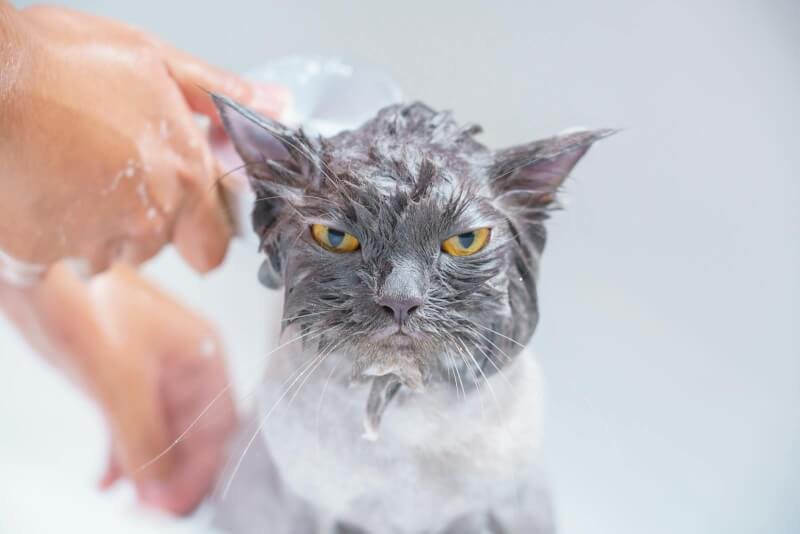If you’re a proud cat owner, you know that keeping your furry friend clean and groomed is essential for their well-being. And when it comes to maintaining their hygiene, one area that often gets overlooked is their ears. So, what are the best practices for cleaning a cat’s ears? In this article, we will explore some simple yet effective techniques that will help you keep your feline companion’s ears clean and healthy, ensuring their happiness and comfort.
Choosing the Right Cleaning Solution
When it comes to cleaning your cat’s ears, choosing the right cleaning solution is crucial. There are various types of cleaning solutions available, so it’s important to select one that is safe and effective for your furry friend. It is best to avoid alcohol-based solutions, as they can cause irritation and dry out your cat’s delicate ear tissue. Instead, opt for cat-specific solutions that are specifically formulated to clean and soothe the ears of your feline companion.
Preparing for the Cleaning Process
Before you begin the ear cleaning process, it’s important to gather all the necessary supplies. This includes a cat-specific ear cleaning solution, cotton balls or pads, and any other tools recommended by your veterinarian. Creating a calm environment is also key. Find a quiet room where you and your cat can relax without distractions. This will help both you and your cat feel more at ease during the process.
Handling your cat’s anxiety is another important aspect of preparing for ear cleaning. Cats can sometimes become anxious or fearful when it comes to having their ears cleaned. To help alleviate their anxiety, try using calming techniques such as soft music, pheromone diffusers, or gentle strokes. Additionally, consider rewarding your cat with treats or praise throughout the process to reinforce positive behavior.
Proper Restraint and Positioning
Understanding your cat’s comfort level is essential when it comes to restraining and positioning them for ear cleaning. Some cats may be more comfortable being gently held in your lap, while others may prefer being wrapped in a towel. Take cues from your cat and ensure they feel secure and supported during the cleaning process.
Once your cat is properly restrained, it’s important to position them in a way that allows for easy access to their ears. Make sure their head is within reach and that you have a clear view of their ear canal. This will make the cleaning process much easier and more effective.
Inspecting the Ear Canal
Before you begin cleaning, it’s important to inspect your cat’s ear canal for any signs of ear issues. Look for redness, swelling, or discharge, as these can be indications of inflammation or infection. Additionally, pay attention to any excessive scratching or head shaking, as these behaviors can also suggest ear problems. If you notice any abnormalities, it’s best to consult with your veterinarian before proceeding with cleaning.
The Actual Cleaning Process
During the actual cleaning process, it’s important to handle your cat gently and stabilize them to prevent any accidental movements. Using a cotton ball or pad soaked in the cat-specific cleaning solution, gently wipe the visible parts of the ear canal. Avoid inserting anything into the ear canal itself, as this can cause injury or discomfort. Instead, focus on cleaning the outer area of the ear, including the folds and crevices. Be sure to follow the instructions provided with the cleaning solution to ensure safe and effective use.
Dealing with Resistant Cats
Some cats may resist or become fearful of the ear cleaning process. In these cases, using treats and positive reinforcement can be helpful. Rewarding your cat with treats or praise before, during, and after the cleaning process can help create a positive association with ear cleaning. If your cat continues to show resistance or discomfort despite your best efforts, it may be wise to seek professional help. A veterinarian or professional groomer can provide additional guidance and assistance.
Frequency of Ear Cleaning
The ideal frequency of ear cleaning depends on various factors, such as your cat’s breed, age, and overall health. It’s important to determine the appropriate cleaning schedule for your cat to maintain their ear health. Consulting with your veterinarian is the best way to determine the optimal frequency for your specific cat. They can provide personalized advice based on your cat’s individual needs and any existing ear issues they may have.
Post-Cleaning Care
After cleaning your cat’s ears, it’s important to dry them thoroughly to avoid excessive moisture. Use a clean, dry cotton ball or pad to gently pat the ear dry. Avoid using any hair dryers or excessive force, as this can cause further irritation. Observe your cat’s ears for any changes or abnormalities following cleaning. If you notice any redness, swelling, or discharge, or if your cat continues to show signs of discomfort, it’s best to consult with your veterinarian.
Warning Signs and When to Seek Veterinary Assistance
While regular ear cleaning is an important part of cat grooming, it’s crucial to be aware of warning signs that may indicate a more serious ear infection. If your cat exhibits symptoms such as a strong odor coming from the ears, persistent head shaking, loss of balance, or severe redness and swelling, it’s important to seek prompt veterinary assistance. These symptoms could be signs of a severe ear infection that requires professional treatment. Remember, self-cleaning is not always enough, and it’s better to be safe than sorry when it comes to your cat’s health.
Additional Tips for Successful Cleaning
To ensure successful ear cleaning, there are a few additional tips to keep in mind. Using a warm compress before cleaning can help relax your cat and make the process more comfortable. You can place a warm, damp towel over your cat’s ears for a few minutes to help soften any debris or wax. Trimming your cat’s nails prior to cleaning can also prevent accidental scratches or injuries. Lastly, be patient and persistent. Ear cleaning may take some time for your cat to adjust to, so give them the time they need to feel comfortable and relaxed throughout the process.
By following these best practices for cleaning your cat’s ears, you can help maintain their ear health and prevent potential problems. Remember to consult with your veterinarian for personalized advice, as they are the best resource for ensuring the well-being of your furry friend. With patience, care, and the right approach, you and your cat can successfully navigate the ear cleaning process.


